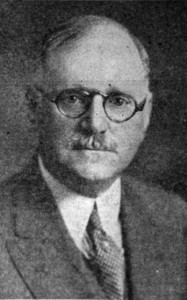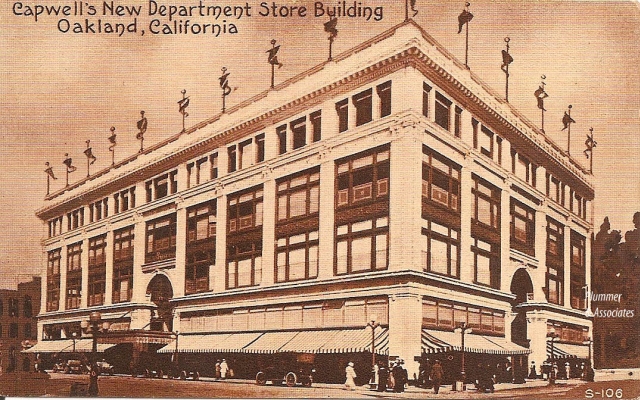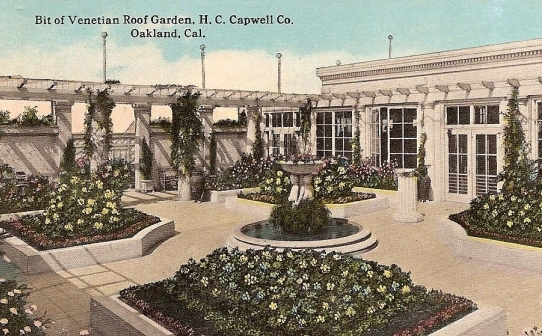Samuel & Albert S. Lavenson
Values Codes I – E – L – P
Samuel Lavenson was born in 1829 in Europe.
He arrived in Sacramento, California in 1851.
In 1955, he founded the Sacramento firm of Locke & Lavenson, which manufactured tents and wagon covers and sold all sorts of floor coverings, curtains, shades, etc.
In 1857, Sam Lavensonhelped organize Congregation B’nai Israel of Sacramento.
Sam’s son, Albert Lavenson, was born in Sacramento in 1865.
In 1890, he moved to the Bay Area and went to work for Harris C. Capwell, who operated a small dry goods business known as The Lace House, located at 12th and Washington, in Oakland.
Albert did everything from selling to bookkeeping, and eventually became Capwell’s partner and vice-president of Capwell’s Department Store.
The H.C. Capwell Company grew rapidly, and in 1912 moved to a large building at 14th and Clay in Oakland.
The department store employed over 800 people by the time they moved to their 14th and Clay locations.
The Lavenson-Capwell partnership lasted for thirty years.
Civic
Albert S. Lavenson gave skilled and devoted leadership to Oakland.
He was a lifelong booster of Oakland, with great faith in its future.
He was an organizer and director of the Commercial Club, which developed into the Oakland Chamber of Commerce.
He was a music lover and was largely responsible for the construction of the Music Building at Mills College, and anonymously supported many young artists, some of whom became nationally well known.
Albert was active in the Liberty Loan Drives, Red Cross, Community Chest, Children’s Hospital, and other civic causes.
In March 1930, he was honored by a citywide testimonial dinner sponsored by the Oakland service clubs and civic groups in tribute to his community concerns and contributions.
Community
Albert Lavenson was a leader in welfare work and in synagogue life.
His philosophy was “make your standard of living your standard of giving,” and he pressured those who lived lavishly to give generously. Albert himself lived modestly, but gave liberally.
As president of Temple Sinai, he worked hard for adequate support of its programs and activities.
In 1927, a year after he retired from managing Capwell’s, he accepted the chairmanship of the Jewish Welfare Campaign of the East Bay.
Family
In 1894, Albert Lavenson married Amy Furth, daughter of Gold Rush merchant Simon Furth.
Amy and Albert Lavenson had one daughter, Alma.
Albert Lavenson died in 1930.
Most of his estate went to a charitable and educational foundation he had established.
Source
- Norton B. Stern, “Albert S. Lavenson: Merchandising Wizard, Sacramento & Oakland, California,” Western States Jewish History 41/1.



